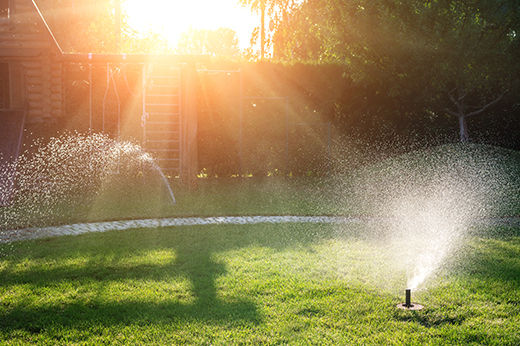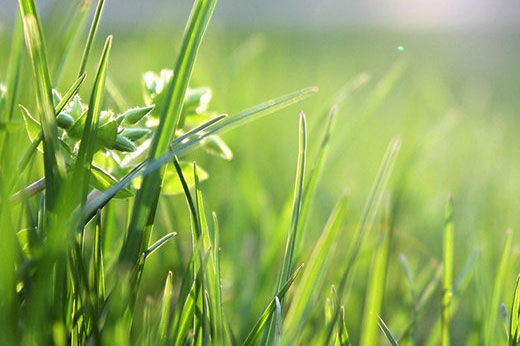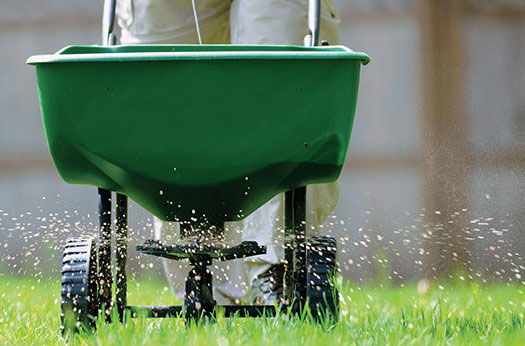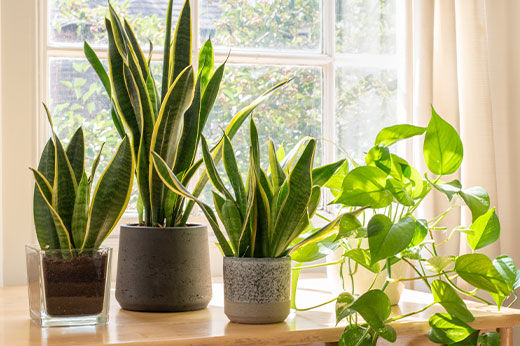5 Tips for Growing Tomatoes
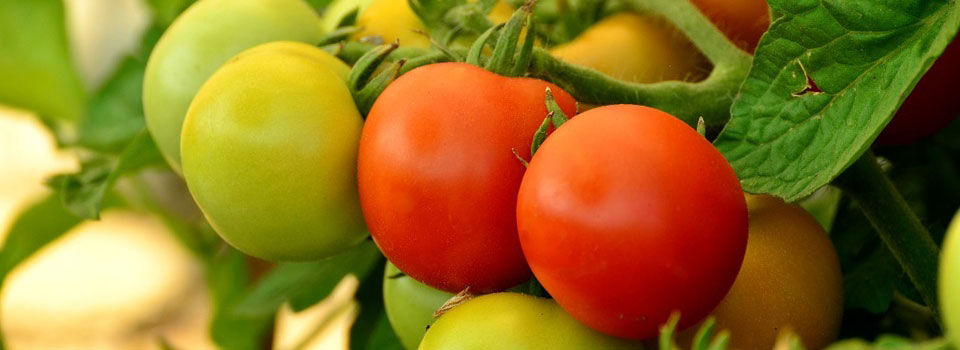
How to Get Ripe, Juicy Tomatoes
Want to add tomatoes to your list of grow-your-own foods? You’re not alone. Tomatoes are America’s most popular home garden crop. Technically it’s a fruit but most of us lump it in with the vegetables we eat. No matter what you call it, a tomato is delicious! To get the best harvest possible, follow these five tips for growing this savory, flavorful plant.
1. Maximize Sun and Warmth

Tomatoes love sunlight and warm weather but dislike extreme highs or lows. Most varieties won’t survive a hard frost. It’s recommended you wait to plant them until the threat of freezing temperatures has passed. Choose the sunniest spot in the garden, looking for at least seven hours of sunlight per day. If you have a greenhouse, you’ll get the best crop, but they'll grow just fine in your vegetable garden. You can even grow tomatoes in small spaces. They do quite well in planters. Just make sure the vessel is large and able to drain. Don’t put more than one plant per pot, and keep the container in a sunny spot for seven to eight hours each day.
2. Reinforce the Soil
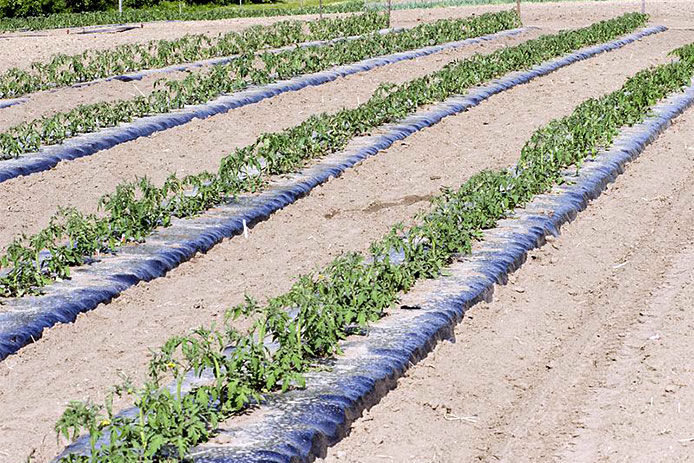
Tomatoes need rich, drainable, slightly acidic soil to thrive. To test the pH, pick up a soil tester. You’re looking for a slightly acidic pH level of 6.5 to 6.8. If the soil is too acidic, add limestone. If it’s too alkaline, you can add sulfur or composted organic matter. After testing the soil, but before planting, add fertilizer. Either chemical or organic helps provide the nutrients tomatoes need to grow and produce. Organic fertilizers improve the soil’s structure and increase its ability to keep in water and nutrients. If you’re using containers and potting soil, you still need to use fertilizer.
3. Plant and Water Deeply
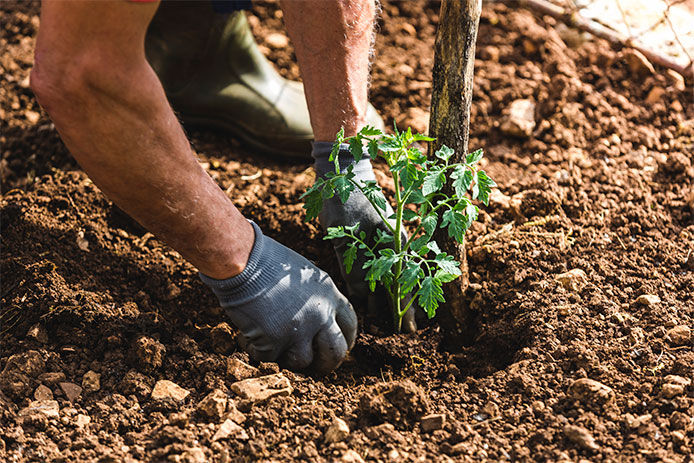
You have two choices when planting tomatoes. You can use seeds or transplants.
If you’re using seeds, you should start them in seed trays. Once they reach an inch in height, you can move them to pots.
If you’re using transplants, plant them deep in the soil so that two-thirds of the plant is submerged in the soil. This gives the plant a stronger, better root system which, in turn, produces better fruit. Water deeply, as well, at the root of the plant. Wet leaves can lead to blight and fungus. Deeply, however, doesn’t mean excessively. Your goal is to keep the soil moist, not soaked. Consistency is key, and you should check your tomato plants every day to make sure the soil isn’t drying out.
4. Stake or Cage Your Plants
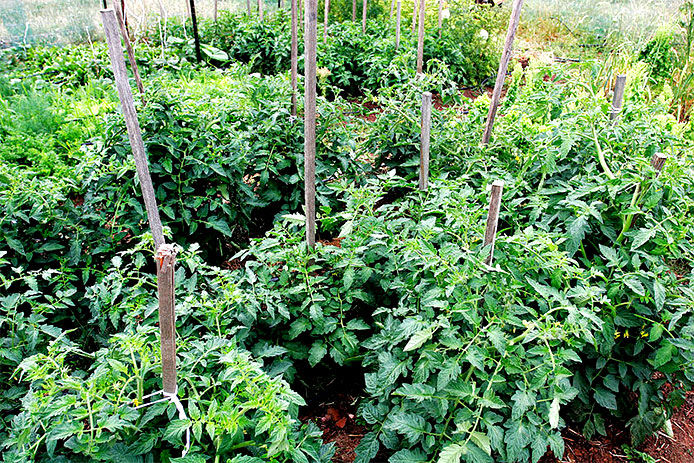
As your tomato plant grows, it will need support. So tie each plant to a stake or cage. The main reason is to keep the fruit off the ground, where it will rot. The plant will produce cleaner, healthier tomatoes. Staking also keeps the plant from spreading around the garden, taking up too much space. You’ll get an earlier harvest with larger fruit. It’s also easier to monitor your garden for pests and diseases when the plants are tied up.
5. Prune Back the Plant
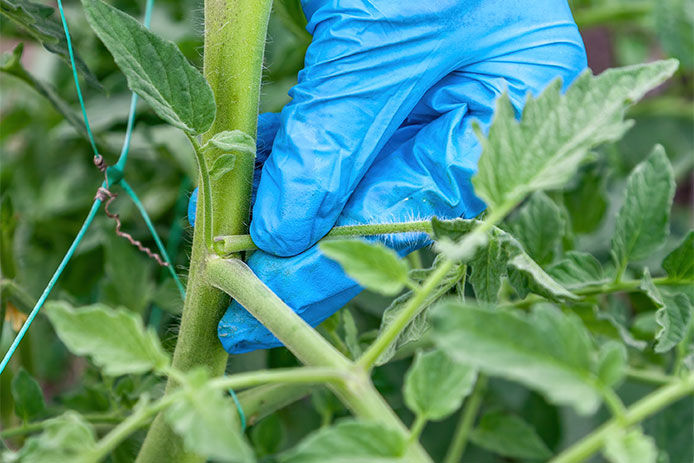
Tomato plants are for suckers. Well, they have suckers. These are the small leaves that shoot out from the main stem. Pruning them, or suckering, promotes air circulation, keeps disease down, and focuses the plant’s energy on growing fruit. Suckers should be plucked off by hand before they reach 4 inches long. Waiting until they are larger can damage the plant. Don’t use a knife on suckers, as this can lead to the spread of disease. Suckers grow back quickly. You should prune them once or twice a week. You can use pruning scissors on thicker stems that need to be removed. Also, remove any yellow leaves on the plant.
So now that you know how to grow the best crop possible, you can join the 85% of home gardeners who plant tomatoes. Enjoy adding a ripe, red, fragrant tomato to your summer salad. Bon Appetite!
